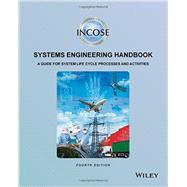A detailed and thorough reference on the discipline and practice of systems engineering
The objective of the International Council on Systems Engineering (INCOSE) Systems Engineering Handbook is to describe key process activities performed by systems engineers and other engineering professionals throughout the life cycle of a system. The book covers a wide range of fundamental system concepts that broaden the thinking of the systems engineering practitioner, such as system thinking, system science, life cycle management, specialty engineering, system of systems, and agile and iterative methods. This book also defines the discipline and practice of systems engineering for students and practicing professionals alike, providing an authoritative reference that is acknowledged worldwide.
The latest edition of the INCOSE Systems Engineering Handbook:
- Is consistent with ISO/IEC/IEEE 15288:2015 Systems and software engineering—System life cycle processes and the Guide to the Systems Engineering Body of Knowledge (SEBoK)
- Has been updated to include the latest concepts of the INCOSE working groups
- Is the body of knowledge for the INCOSE Certification Process
This book is ideal for any engineering professional who has an interest in or needs to apply systems engineering practices. This includes the experienced systems engineer who needs a convenient reference, a product engineer or engineer in another discipline who needs to perform systems engineering, a new systems engineer, or anyone interested in learning more about systems engineering.








